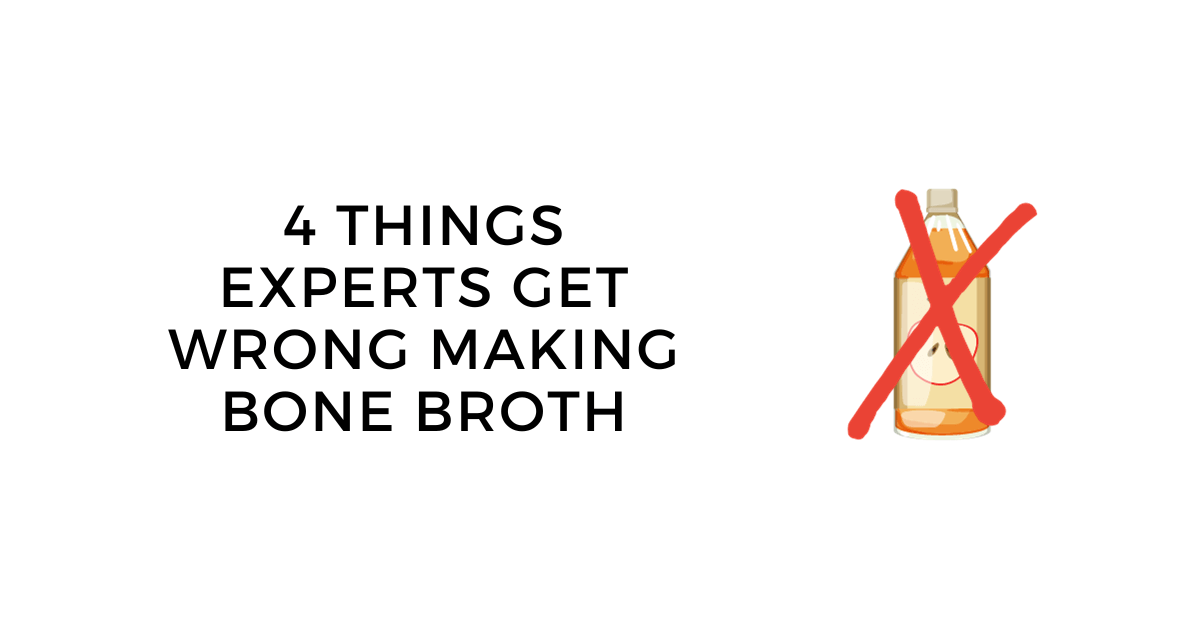
Apple Cider Vinegar in Bone Broth: And 4 Mistakes You're Making
Apple Cider Vinegar in Bone Broth
I get questions all the time on how to make a simple yet delicious bone broth. After years of making it daily, I’ve learned what works and what doesn’t.
The worst part is that all the recipes and info you read online is mostly wrong. Blogs and news sites tend to post the same misinformation on how to make crappy bone broth or bone broth vinegar.
I’m not sure where some of these mistakes started but I see most internet marketer food expert types peddle the same info on bone broth. It’s all wrong.
As a result I constantly get the same troubleshooting questions from friends and customers alike.

This article will go through the 4 things every supposed expert and website gets wrong about making bone broth. Ready? Let’s go!
Mistake #1: Adding Apple Cider Vinegar
Everyone and their mother thinks you should be adding apple cider vinegar or some type of acid to your bone broth.
Acid is typically added at the beginning with the water. Perhaps these armchair quarterbacks even recommend letting the bones sit with the acid in cold water for 30-60 minutes before turning on the heat.
Read the definitive list of bone broth brands you can trust.
The thought is that acid helps draw out nutrients from the bones even before you start simmering the bone broth.
What these charlatans and bloggers haven’t done is lab tested as much bone broth as I have. We send our bone broth for lab testing twice a year for vitamin and nutrient analysis, amino acid profiles and nutrition facts.
I suspect this is where some of the misconceptions around nutrient content in bone broth comes from. Similar uninformed bloggers peddle the notion that bone broth is rich in calcium. After all, it is made of bones, isn't it?
This is completely wrong. Look on the back of any bone broth and you’ll see at most 5% of your daily calcium per serving.
We’ve directly compared two batches of our bone broth for nutrients and vitamins. The first batch is made with apple cider vinegar, while the second without.

Guess what? There was no significant difference in vitamin and mineral content. A few percentage points here and there with respect to iron, calcium and vitamin C.
It is important to put things in context in terms of nutritional benefits to you. While 10 mg vs 12 mg is a 20% increase, it amounts to nothing in your daily intake of calcium.
Let me explain why. The recommended daily intake for calcium is 1000 mg.
10 mg serving represents 0.5% of your recommended daily intake.
12 mg serving represents 0.6%
If you want to save time and money in your homemade broth, I would argue it is a waste to use ACV to get an extra 0.1% of your daily intake.
But if you still prefer using it, then go for it.
Bone broth is not about the vitamins and minerals. It is about the gelatin, collagen, glucosamine and proteoglycans.
Next time you make bone broth, skip the apple cider vinegar. Your money is better spent elsewhere. If you do insist, you will end up with bone broth vinegar.
Read our secret recipe to making bone broth.
Mistake #2: All about the HEAT!

How hot should you cook your bone broth? Lots of websites encourage you to look for the perfect low simmer with the occasional bubble surfacing every couple seconds.
This is a recipe for weak broth with no gelatin and thus no nutritional benefit.
You should think of making bone broth as harvesting collagen and gelatin from bones and connective tissue. You need heat to harvest collage and gelatin in an efficient manner.
A low simmer will still work, but your cook time will be significantly longer. Perhaps two days at a lower temperature. Why wait when you can have it done quicker?
We recommend cooking your bone broth as hot as you are comfortable with without the broth spilling over your pot. If you have a thermometer, I’d recommend 98 degrees celsius.
This is a hard rolling simmer with lots of bubbles popping up. Don’t be afraid of letting it boil from time to time as well. Especially if you are home and able to watch over it every hour or so. If you go out or go to sleep, better to turn down slightly to 95 or 96 celsius.
With this temperature, you can make a collagen rich chicken bone broth in 10-12 hours and beef bone broth in 16-18 hours.
If you’re using a crock pot or slow cooker, then heat on high with the lid on. On the stove it is better to keep the lid off. Since you can achieve a higher temperature, the lid is not needed.
Moreover leaving the lid off lets the broth reduce naturally which results in more gelatinous and concentrated bone broth. If you notice it reduces too much, you can always add more water to the level you started with.
If you just want to try one and not obsess over making the best one, then read my guide on where to buy bone broth.
Mistake #3: Bones to Water Ratio
It takes a lot of bones to get that nice gel in your bone broth. This is where the big misconception around high prices for bone broth comes in.
Bones are expensive, and you need more than you’d think to make bone broth. This translates into why bone broth is not inexpensive these days, though we are working to change that.
So how many bones do you need for properly gelly bone broth? Think of your pot filled with bones as a cup filled with ice. You add water to the ice which fills in the nooks and crannies. The ice is the bones you’re using in this case.
For chicken bone broth we recommend 1.4:2 ratio of bones to water. If you have access the chicken feet to mix in with your chicken bones, then the ratio is closer to 1:2 bones to water (ex: 1 KG of bones per 2L of water).
For beef (or other ruminants) bone broth the ratio is closer to 1:2 bones to water, although this greatly depends on the type of beef bones you’re using.
Your mileage will vary depending on the bones you use, so best to experiment with a smaller batch before testing a larger one. There is nothing worse than finishing a lengthy simmer only to find you have average bone broth for your efforts.
Mistake #4: Poor Skimming Practises
Yes I’m calling you out for poor skimming practices. The first 1-2 hours of cooking bone broth is crucial as it sets the stage for the whole batch.
If you neglect skimming the fat, foam and impurities as they rise, you may end up with cloudy broth. There is nothing wrong with cloudy broth. In fact, this is how certain culinary cultures (Korea and Japan) prefer to make protein rich broths
This happens to the best of us. In our early days we had to pour out full batches of bone broth once or twice due to cloudy and murky broth. You know it when you see it. It looks like milk.
This is mainly due to not skimming properly, but also from stirring bone broth during the cook. Do not stir it, ever.
Take pride in skimming all the foamy bits every 20 minutes or so for the first 1 hour or however it takes to boil the broth for ten minutes or so. It is quite relaxing. After that you are good to go!
“Homemade broth, of course, is a whole food product. It’s a slow food, whole food, and real food that has been nourishing and healing people for tens of thousands of years.”
― Sally Fallon Morell, Nourishing Broth: An Old-Fashioned Remedy for the Modern World
Bottom Line
There you have it, 4 mistakes many people make when getting started making bone broth.
If you are considering purchasing bone broth then make sure that you find a quality product. The best one in my mind is the chicken bone both powder from Bluebird Provisions.
You can find it on Amazon prime for free shipping.
Have you made bone broth? Leave a comment and let me know how it went!
Sources:
(1) https://pubmed.ncbi.nlm.nih.gov/2592713/
(2) http://www.ncbi.nlm.nih.gov/pmc/articles/PMC1975347/
(3) http://jn.nutrition.org/content/7/5/535.full.pdf
(4) http://www.ncbi.nlm.nih.gov/pubmed/8082052
(5) https://www.ncbi.nlm.nih.gov/pmc/articles/PMC5533136

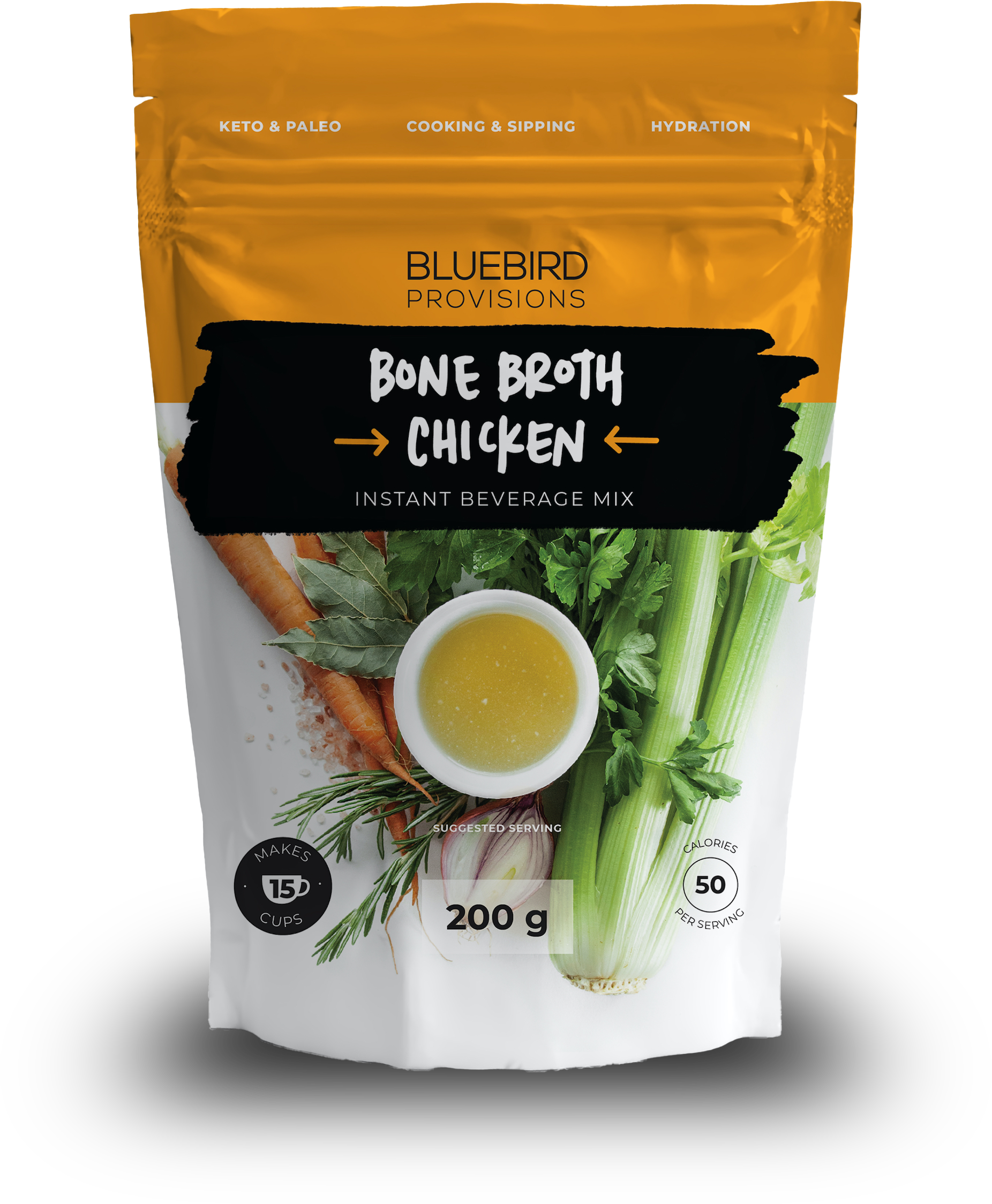
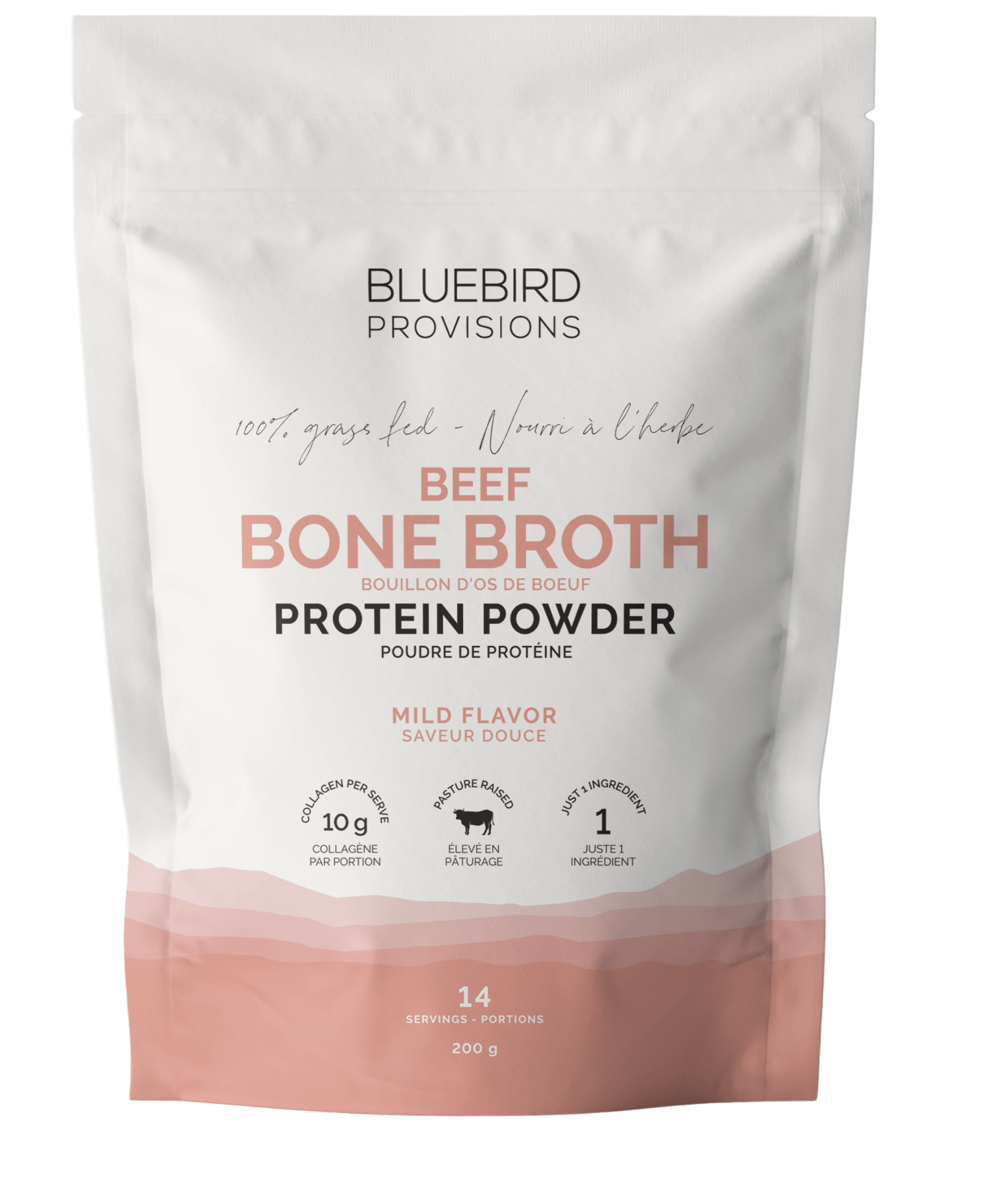
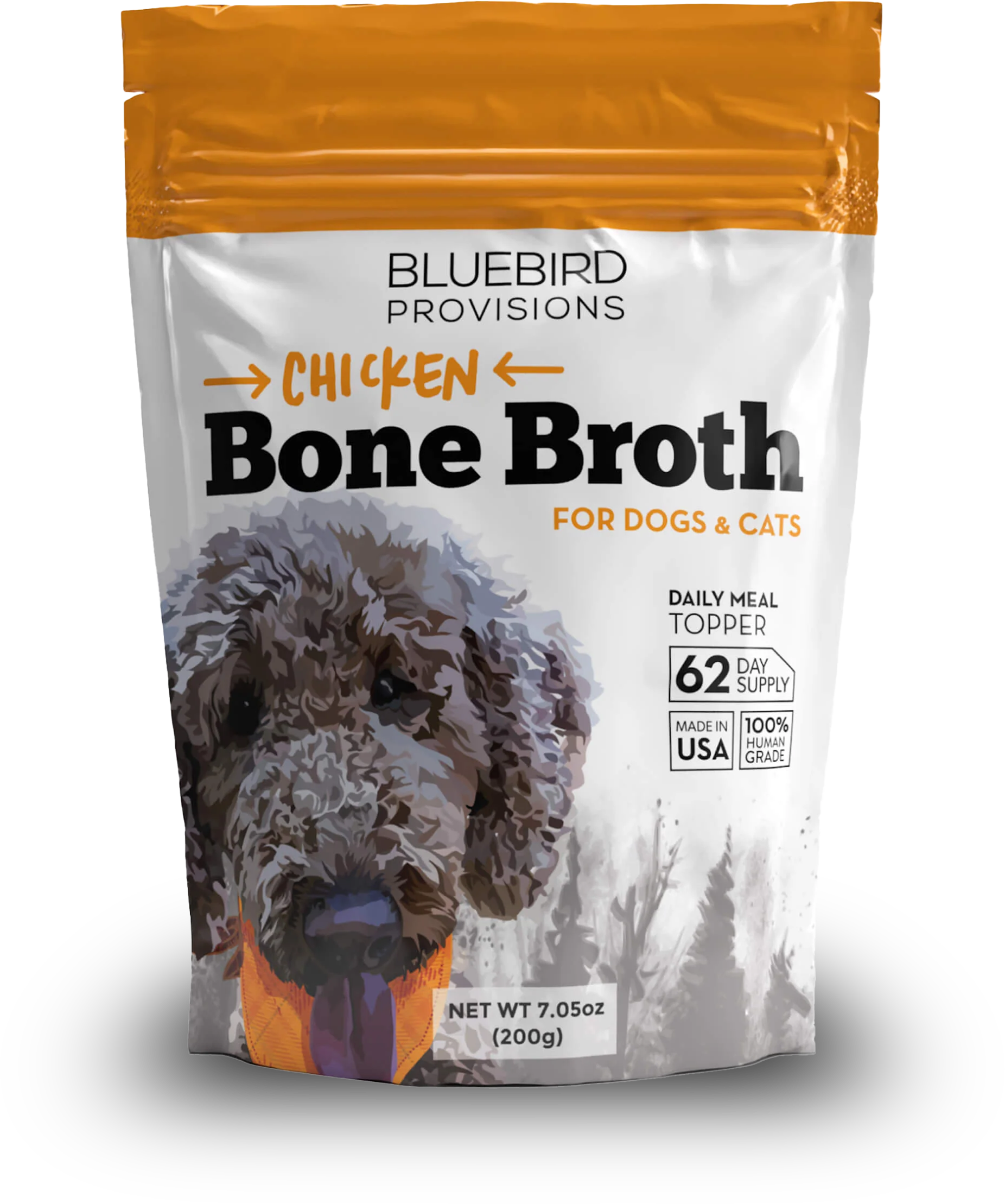
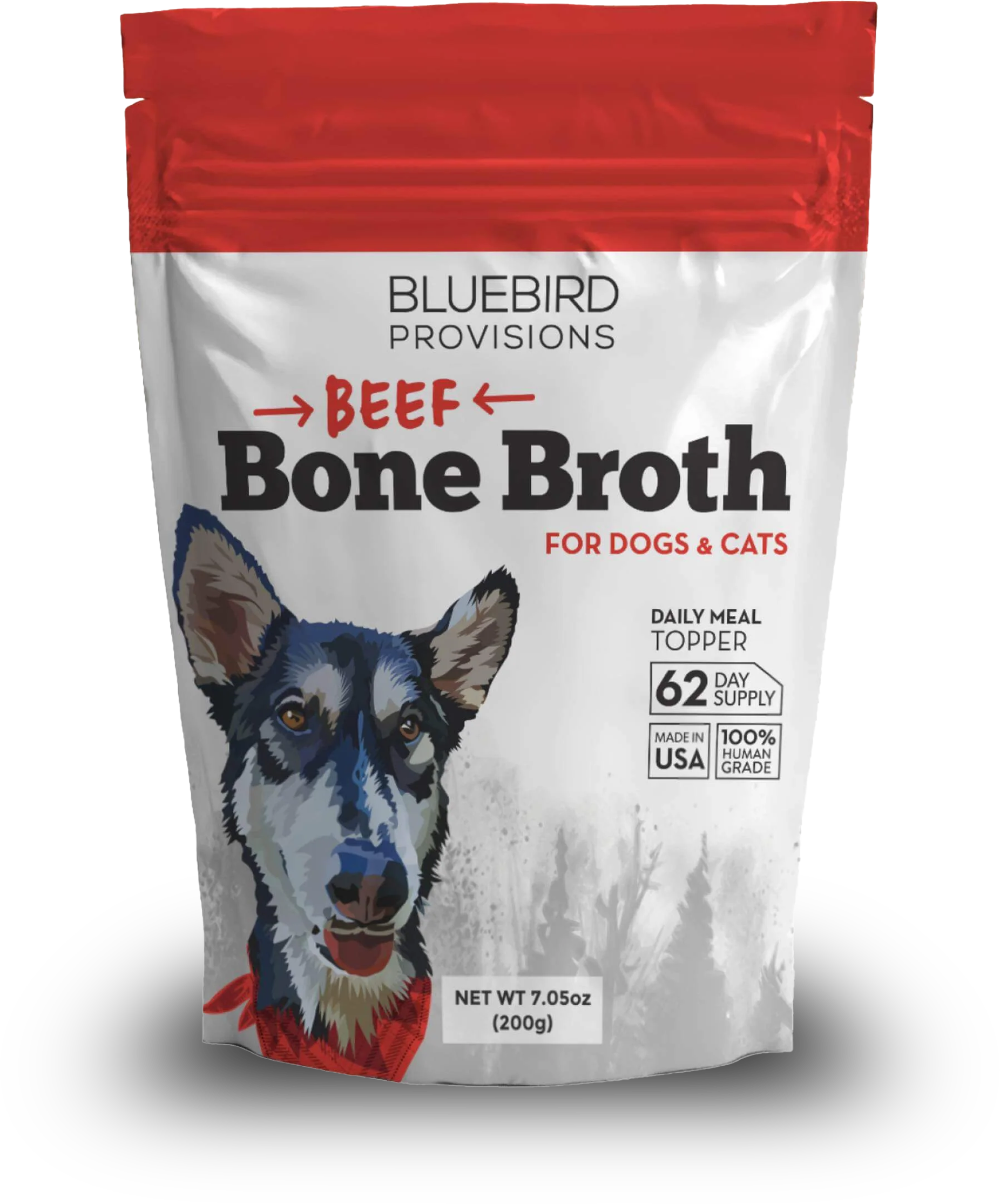
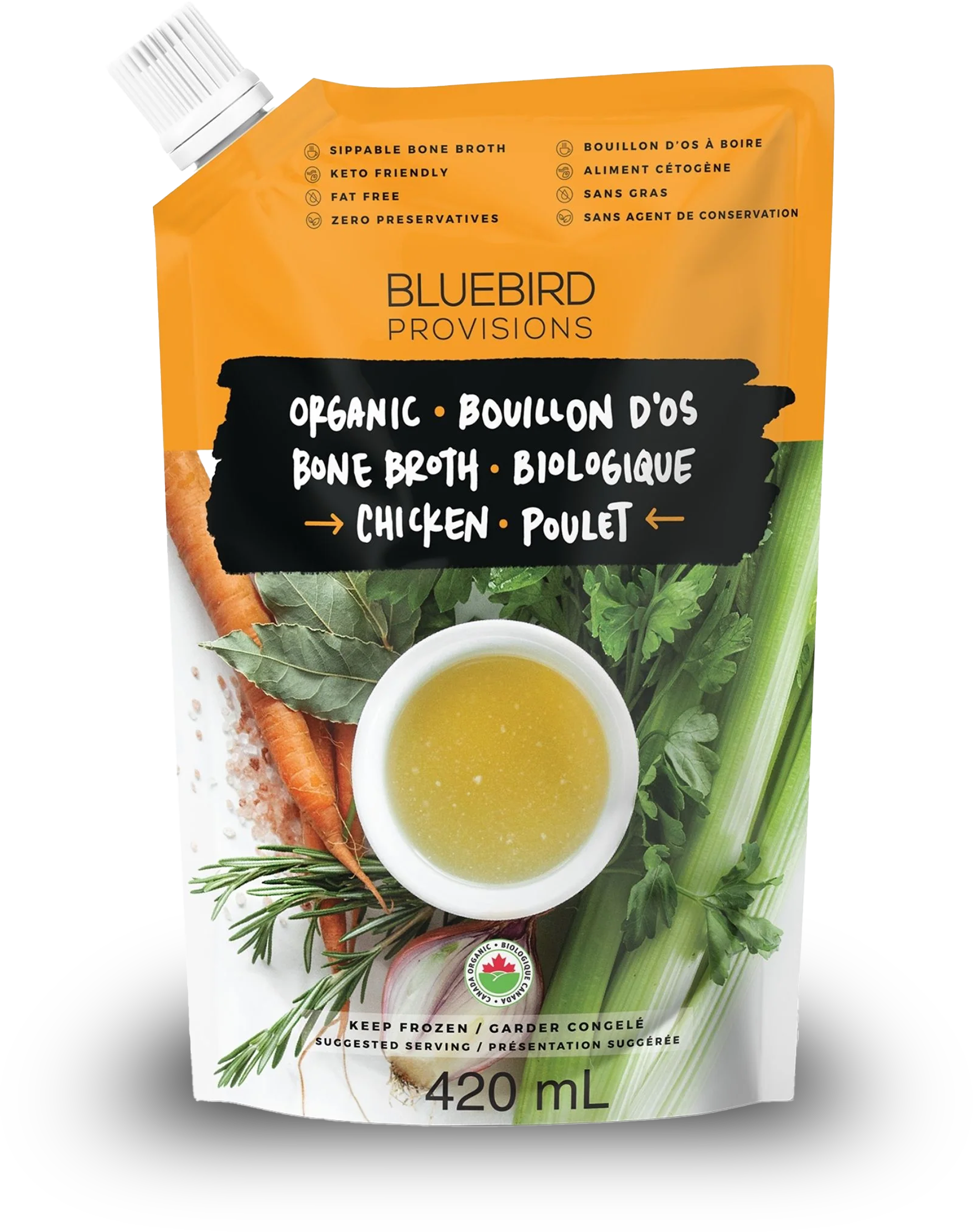
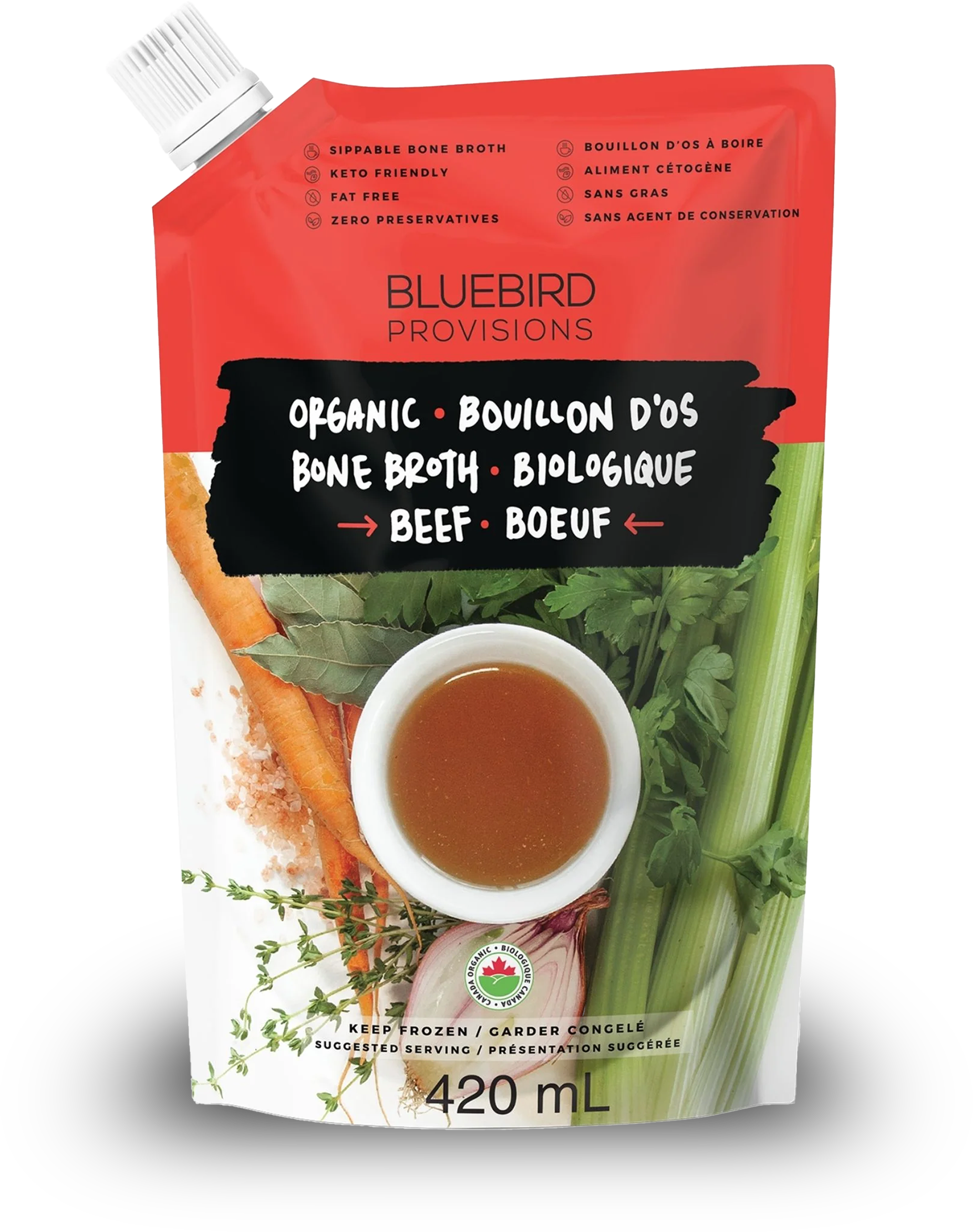



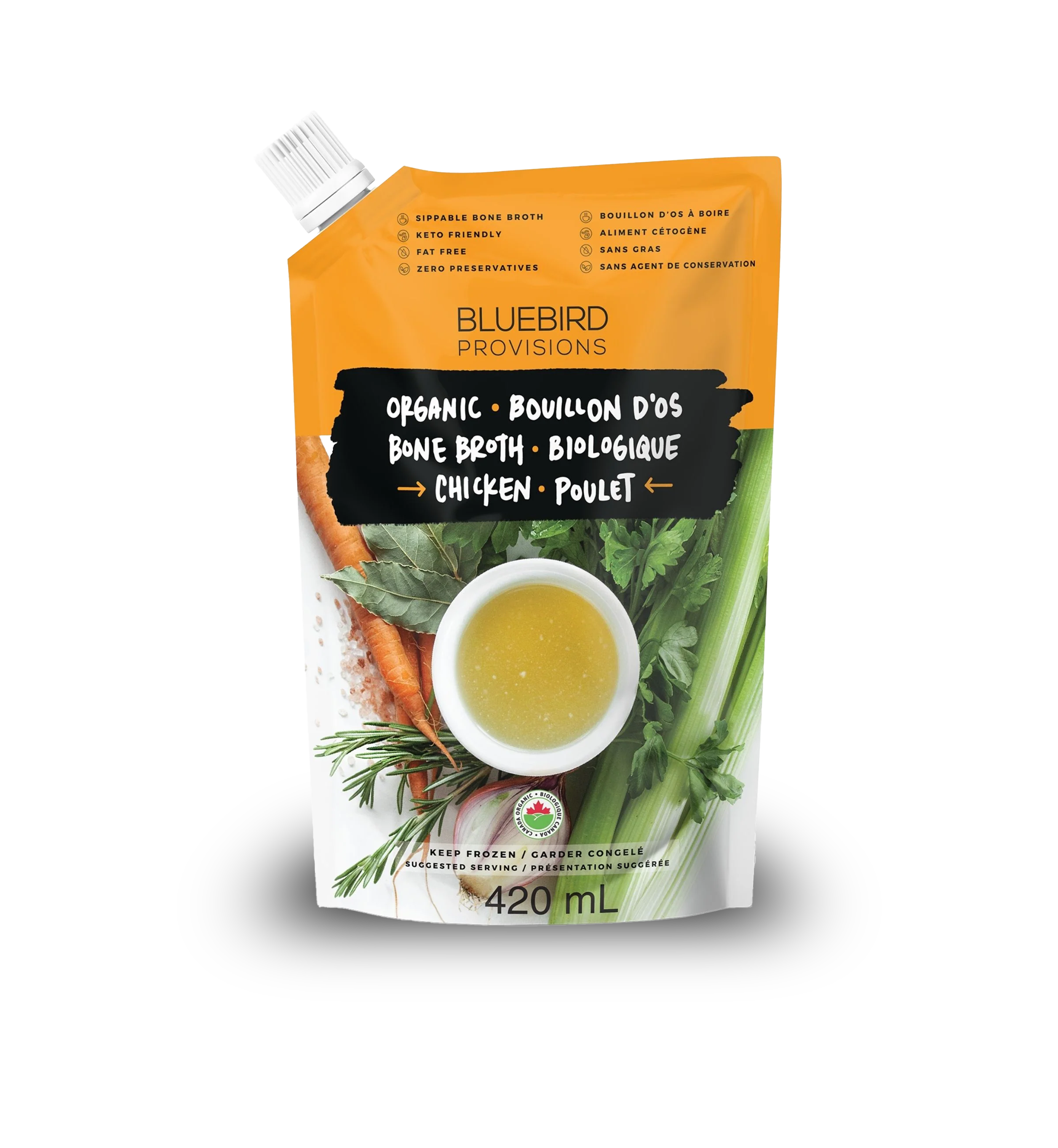
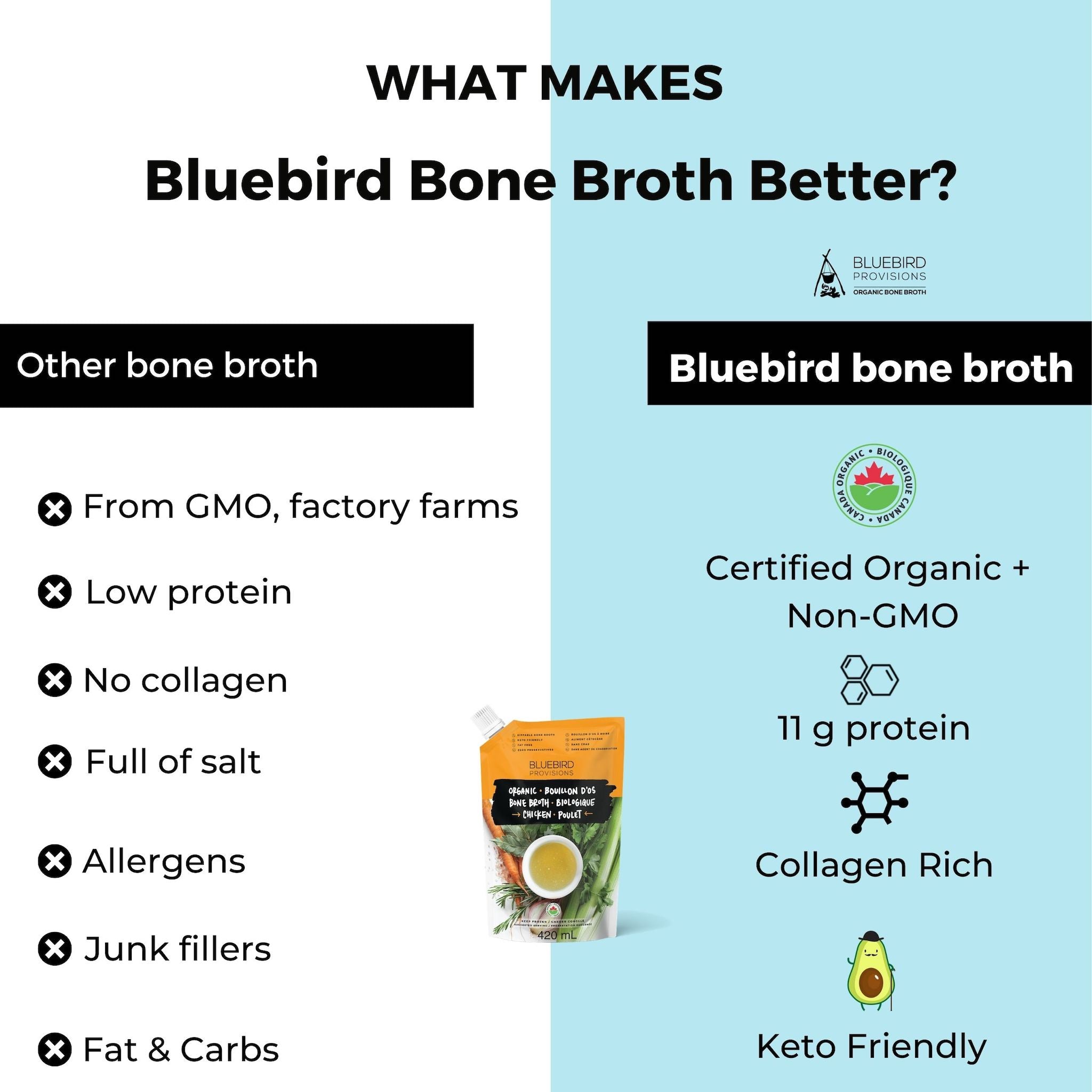
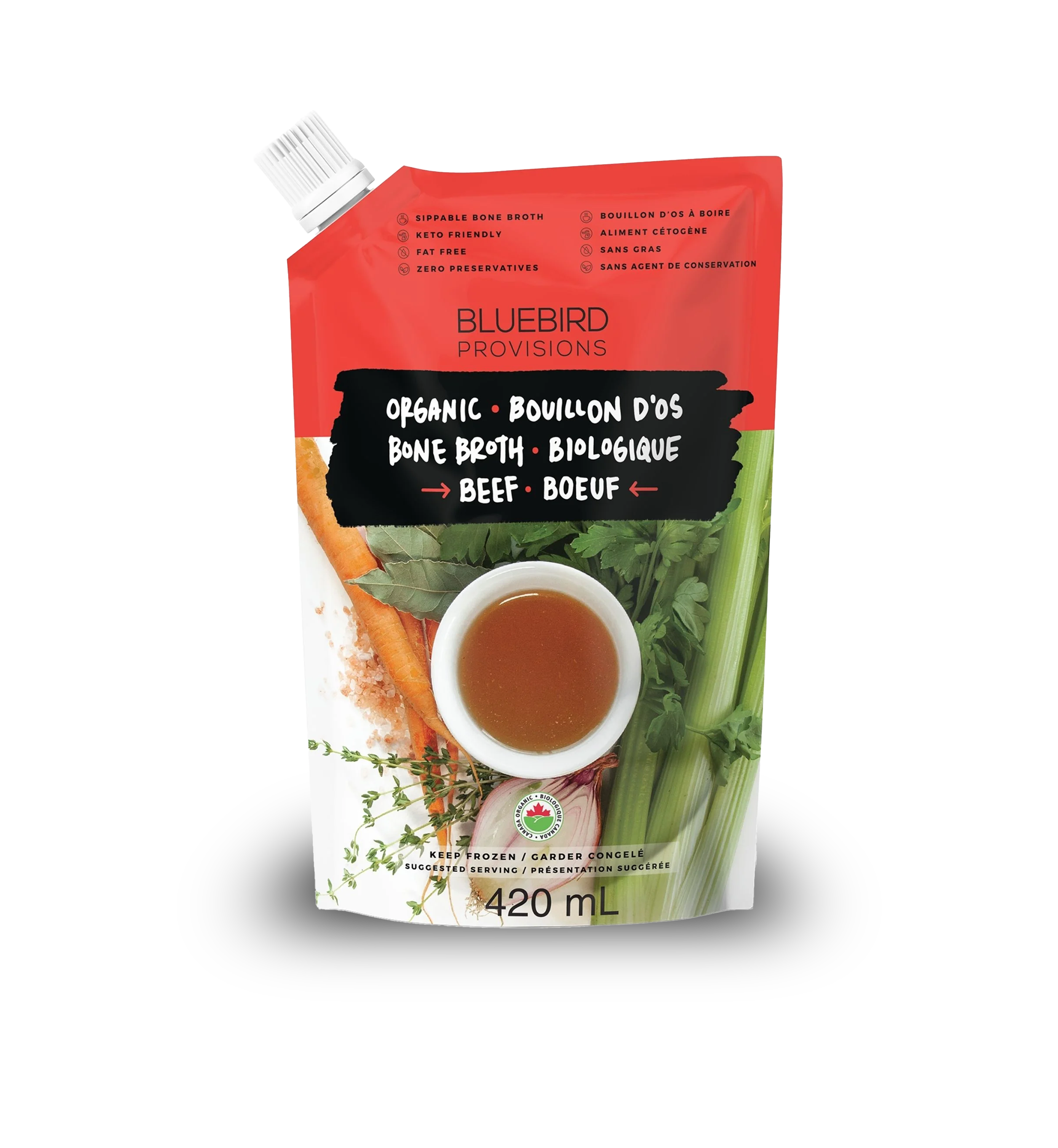
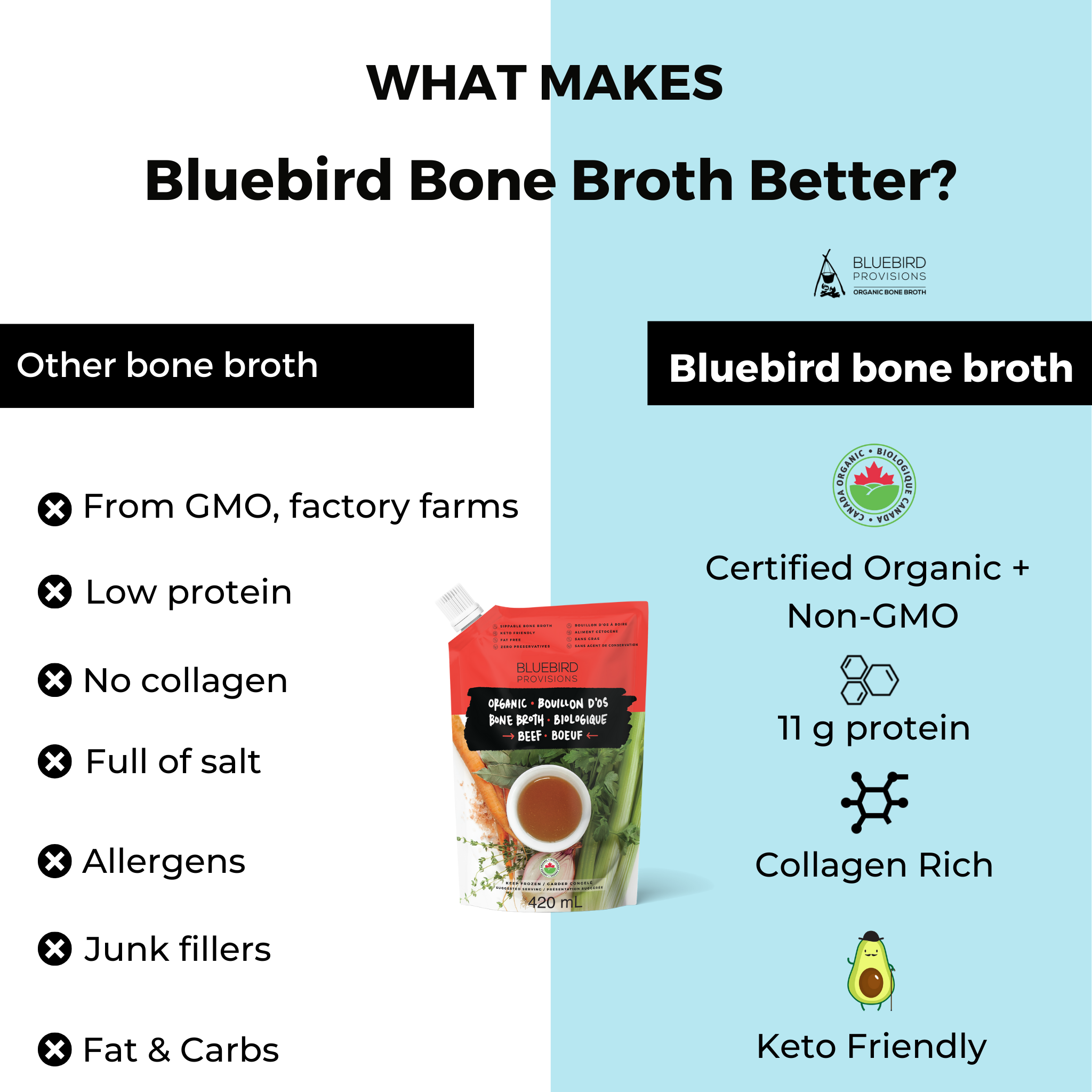
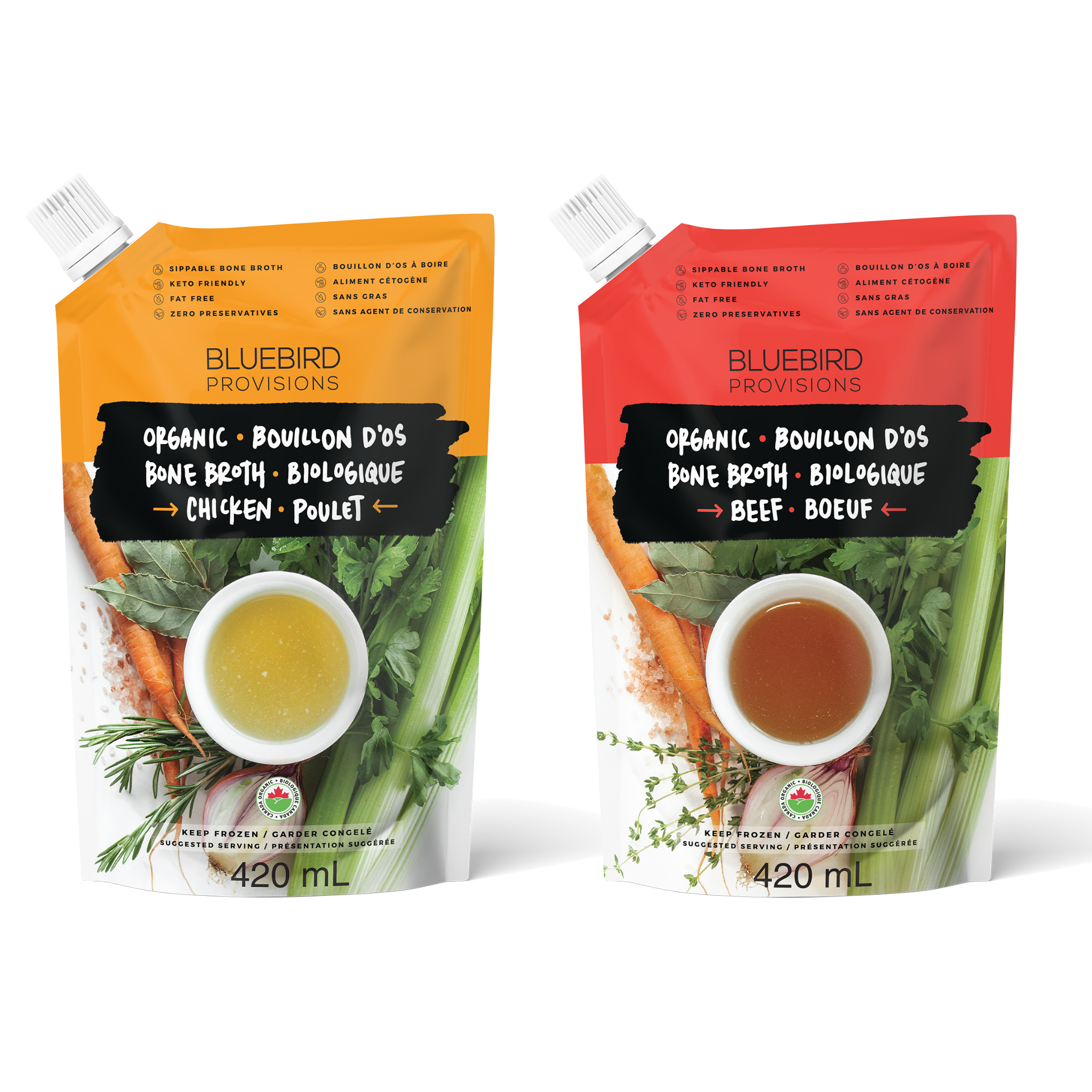
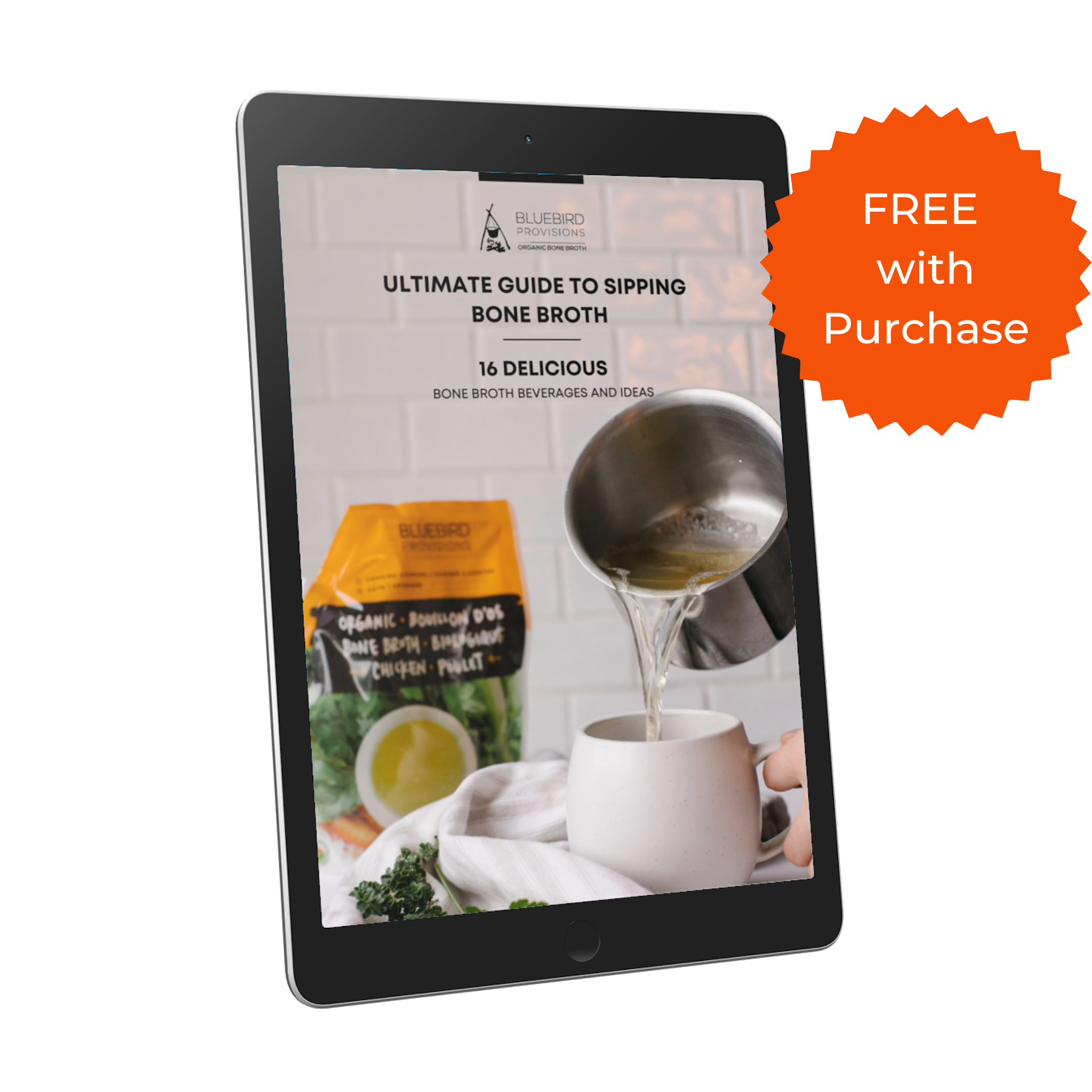
127 comments
What is the problem with cloudy broth for home use? I fully understand why you would have to toss cloudy batches for your business, but I am unclear what the issue is for those of us making bone broth for drinking.
Also, I have seen some sites that recommend blanching beef bones before roasting them. “The purpose of blanching is to remove impurities, coagulated protein, and blood which ultimately results in a cleaner, better tasting broth.” What are your thoughts on this?
Thanks for any insights you can give.
Viv
Hi Carmen,
I would recommend storing your bone broth in glass jars or containers. They are safe for about 5 days in the fridge, or 6 months in your freezer.
Hope this helps and let me know if you have any other questions.
Connor
Connor at Bluebird Provisions
Thank you for this easy to digest to the point info. I m am going to be making my first batch of bone broth today! Quick question…. How do you store your broth and how long does it stay good? Thanks!
Carmen Contreras
Hi Sheena,
Glad you found the article useful. You can certainly reuse the bones for second and even third batches of bone broth. However, you will not get as much out of the bones a second time. I’d recommend trying to get approximately half as much bone broth from your second batch, so use less water at the beginning.
The reason being that a lot of the connective tissue has already broken down during simmer #1. There is still some left for subsequent batches, but not a ton.
Beef bones in particular work great for a second batch. Chicken bones generally break down much quicker and would not work as well for second batches.
Good luck and let me know how it goes.
connor
Connor at Bluebird Provisions
Thanks for this article, very enlightening especially wrt the apple cider vinegar!
Can bones be reused to make bone broth and if so, how many times? I’d imagine different times for different types of animals bones?
Sheena
Hi, Claire cole
Glad to hear you are making bone broth that is setting properly!
We did include collagen and amino acid testing in our experiments. They were the same with and without vinegar. I’m not sure how to make sense of your bone broth setting better with vinegar. If it works for you then keep your process the same.
Connor
Connor at Bluebird Provisions
Hi Pat,
Thanks for your thoughtful comment and information. In regard to your first point, I think we will have to agree to disagree and leave it at that. I’ve mentioned my evidence in the article, so writing anything more likely won’t change your mind.
On your second point, yes I agree that altitude and pressure has a large effect on boiling temperatures, heat and cook times. I guess my point is to illustrate than many home cooks are frightened to let their bone broth truly boil. Many guides and videos I read mention you can’t boil your bone broth. My aim is to dispell that myth.
Thanks for your thoughtful comments . I appreciate it!
connor
Connor at Bluebird Provisions
Hi Shelly H
Yes 5 hours at max on an instant pot will be enough to get a very thick and gelatinous bone broth. If fact, I have published an instant pot bone broth recipe here: https://bluebirdprovisions.co/blogs/news/instant-pot-bone-broth-recipe
Looks like you are already doing a great job with bone broth, so keep it up!
connor
Connor at Bluebird Provisions
Great blog post! I make my bone broth regularly using my Instantpot MAX which I bought specifically for making bone broth (I cannot sleep when I smell soup!). I do 5 hours on MAX and get a nice gelatinous broth and my bones comes out very soft. I’m curious as to your opinion if that would be long enough to get all the goodness out for the health benefits?
Shelly H.
I don’t know much about making bone broth. I’ve only made it once and it was a small batch. But I question one or two of your statements. One being that vinegar is not helpful. I would think that the collagen and calcium in the bones is not significantly affected by adding an acid, as in vinegar. The calcium in the bones is leeched out better with the acid in the water. Same goes for the hyaline cartilage found on the ends of some bones.
With regards to the temperature of the water that the bones are boiled in. Water at sea level boils at 212 F. and turning up the heat under the pot just makes the water boil harder, NOT HOTTER! So the slower boil or simmer as apposed to a hard or rolling boil makes no difference to “harvesting collagen and gelatin”. The only change achieved at a slower boil is less water evaporates or boils away over a set period of time. (For example, overnight.) If you want water to “boil” hotter, than increasing the amount of pressure it’s under will accomplish that, just as decreasing the amount of pressure it’s under, as at higher altitudes will make the water boil at a lower temperature. (Any cook will tell you that.)
Pat in Seattle
hi Connor,
Any comment on the experts’ claim that the vinegar or any other slightly acidic medium helps break down collagen? In your tests did you measure collagen content with and without vinegar? It seems that when I make stock with vinegar it doesn’t set like without, so I wondered if it was the vinegar keeping the gelatin more fluid. Thanks for all the other good tips,
Claire cole
Hi Katherine,
Glad to hear you are making bone broth! As for the parboil technique. It does help a bit with skimming, however I do not think it helps enough to warrant the extra work.
It takes some time to parboil, skim, remove the solids, prepare to bake…. etc.
My point is that you will still have to skim a bit enough if you parboil. So it depends if you want to parboil first and skim a bit. Or not parboil and skim a lot.
Let me know how your batch turned out. Did it gel?
Crock pot is perfect for bone broth. It just gets difficult to make lots of it. All the best and let me know if you have anymore questions.
Connor
Connor at Bluebird Provisions
Hi Connor! I’m excited to try your product! I had not heard of it before and found this looking to see if I screwed up forgetting ACV as my pressure cooker is already running. I had never used ACV or a pressure cooker for my Bb or stock but was experimenting with some left over chicken carcasses. Anyhow, I read (after I did some beef bones last fall) that if you are starting with raw bones to parboil them to remove that nastiness even before roasting if you are choosing to roast them. Once done with parboil, either roast or simmer as normal using whatever method you like, crock pot, pressure cooker or stovetop. What are your thoughts? I was always worried about leaving the stoveon unattended so I did my crockpot. Good BB but knew it could be better. Today’s experiment has yielded a beautifully clear and vibrant product. Anxious to see how thick the jelly is once fully cooled in the morning!
Katherine M Whitson
Hi Dani,
Cows are typically fed rations that include alfalfa, hay, barley, oats and many other things. These do include grains of course.
Chickens are fed a mixture of many things that may include (not limited to) Organic wheat, barley, peas, flaxseed meal, corn, soybeans, molasses fish meal, sesame oil.
Hope this helps and let me know if you have any other questions.
Connor
Connor at Bluebird Provisions
My daughter recently started suffering from many food allergies. The top 8 & more. What kind of diet do these animals have aside from grass?
Dani
Hi Pamela,
We package our bone broth using a hot fill technique then immediately ‘flash freeze’ it to preserve freshness and ensure the quality remains the highest possible. This is also the most food safe option as the bone broth spends as little time possible in the critical temperatures where pathogens may develop.
We are also making news batches of bone broth, you can expect the bone broth that ships to you to be made in the last 1-2 months. Our bone broth has a two year frozen shelf life.
All of our farm partners need to comply with strict animal welfare standards.
1. Certified Organic. These ensure that the animals are treated well and are not exposed to adverse living conditions. They also have room for pasture to graze at their hearts content.
2. Animal Welfare Audit. This is similar to organic but for animal welfare. All of our farms need a 3rd party certificate that ensures the welfare of all the animals on their farm.
Hope this helps and let me know if you have any questions.
Connor
Connor at Bluebird Provisions
I am unable to make bb myself and would prefer to buy fresh. If I am unable to do so then tell me about your packaging, how long you keep it from the day it’s made to the day of deliver if buying on line.
Can you make any claims to the care of the animals and what they eat
Thanks
Pamela
Pamela
Hi Erwin. Sounds like best case scenario and that you’re making some deliciously thick bone broth. The more concentrated and gelatinous, the more gelatin / collagen / protein per serving.
I would drink it with the fat if you enjoy the taste. Not a huge point in removing it unless you prefer without the fat.
The only caveat is that you get less yield if it is more concentrated. Sometimes you can dilute it to make it go a bit further.
But I would keep doing what you’re doing, sounds like a great bone broth.
connor
Connor at Bluebird Provisions
HI Connor,
I am learning to make beef knuckle bone broth in my 2 quart Rapida pressure cooker. I cook it for 3 1/2 hours. Once it’s in the fridge, all the “liquid” becomes solid. An inch of solid fat on top and below it pure gelatinous gel. So no real liquid per se.
1) Should I be skimming the solid fat off the broth before consuming? I’ve just heated it up and drank it previously.
2)Is the lack of liquid broth a sign that it needed more water in it??
Thank you so much
Erwin Galan
Hi Mark,
For making bone broth in a pressure cooker I would definitely try what you’re suggesting. Let us know how it works out.
Might take a bit of trial and error to find the best time to skim. But 1 big skim within half an hour will definitely help!
Good luck.
Connor
Connor at Bluebird Provisions
Hi Connor.if I used my pressure cooker and after say half an hour put it in the sink and turned the cold water over it,this allows me to open it straight away and I could skim.then put back on.what do you think
Mark
Hi Jacqeline
That’s too bad about your bone broth. I’m not sure you necessarily did anything wrong.
Is your slow cooker on high or low setting? Either way, I would not expect all of the marrow from your bones to be fully removed while it is cooking. It doesn’t mean that the bone broth isn’t great.
Marrow bones are difficult to make thick, gelatinous bone broth from. I would recommend a mix of marrow bones but mostly knuckle bones. These have more connective tissue that will break down while cooking and leave you with a thicker more gelatinous bone broth.
Hope this helps!
connor
Connor Meakin
Thank you for this post! I just finished my first attempt at bone broth and after 36 hours of simmering in a slow cooker and there was still marrow (?) inside the bones. What did I do wrong or is this to be expected? Looking forward to your reply!
Jacqueline
Hi Janel,
I personally don’t have any experiences using pressure cookers but have heard great things. As long as it produces gelatinous bone broth then i would say keep using it! Definitely saves time and hassle.
Connor at Bluebird Provisions
What are your through on using pressure cookers? I have no problem getting a gelatinous broth, but of course you can’t skim.
Janel
So glad that you’ve found our bone broth Sherry! Thanks for your continued support and for reading. I really appreciate it!
-connor
Connor at Bluebird Provisions
Hi Connor:
I have recently discovered your product in the last year. I experimented by using it with a few standard recipes in which I would normally use cartoned chicken or beef broth. My family noticed the difference right away. I am completely won over by your excellent product, I cannot use anything else. My freezer is now consistently “stocked” so to speak as I never want to run out. And thank you for the insight on how you strive to achieve the best broth, very interesting. I leave it to you to continue to bring an excellent product to market which I will continue to purchase. Kudos!
Sincerely, Sherry Forbes
Sherry F
Leave a comment
This site is protected by hCaptcha and the hCaptcha Privacy Policy and Terms of Service apply.